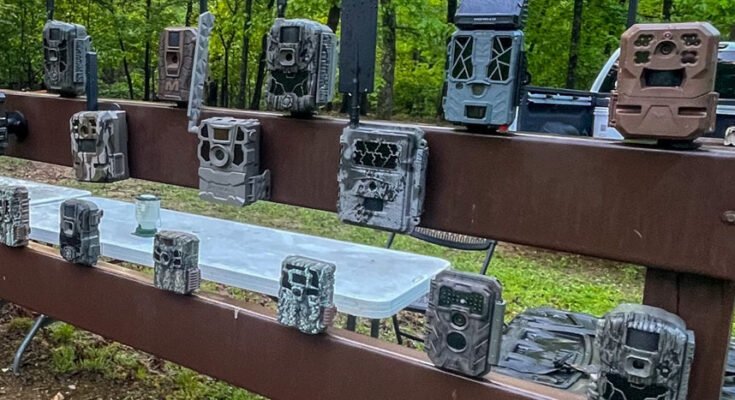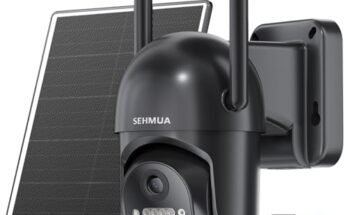Picture this: You’re out in the woods, enjoying the tranquility and observing nature, but there’s a hidden observer capturing your every move. Trail cameras are the silent sentinels of the forest, used by wildlife enthusiasts and hunters alike.
But what if you don’t want to be caught on candid camera? How can you spot these elusive devices before they spot you? Detecting a trail cam might seem like finding a needle in a haystack, but don’t worry. You have the power to turn the tables and become the observer.
Imagine the satisfaction of knowing the tricks to uncover these hidden cameras before they capture your image. This guide will provide you with simple yet effective methods to detect trail cams, ensuring your outdoor adventures remain private. Read on to unveil the secrets to spotting trail cameras and regain control of your natural escapades. Discover practical tips and insights that will empower you, making sure that the next time you venture into the wild, you do so with confidence and awareness.
Trail Cam Basics
Trail cameras can be tricky to spot. Look for unusual objects or tiny lights in the woods. Examine tree trunks for hidden lenses or wire connections.
Trail cameras, often known as trail cams, have become essential tools for nature enthusiasts and wildlife observers. They offer a unique window into the hidden world of animals, capturing their movements and behaviors undisturbed. Whether you’re a hunter, a wildlife photographer, or simply a curious nature lover, understanding the basics of trail cams can enhance your outdoor experiences. Let’s dive into some fundamental aspects of these fascinating devices.
Purpose And Functionality
Trail cams are designed to capture images and videos of wildlife in their natural habitat without human interference. They are equipped with motion sensors that trigger the camera to record when movement is detected. These cameras work day and night, providing valuable insights into animal patterns and behaviors. Have you ever wondered how a deer navigates through the forest at night? A trail cam can show you! Most trail cams are durable and weather-resistant, capable of withstanding harsh outdoor conditions. They typically run on batteries, ensuring they remain operational for extended periods. Some advanced models even offer wireless connectivity, allowing you to view images remotely.
Common Locations
The placement of a trail cam is crucial for capturing the best footage. Typically, they are positioned along animal trails, water sources, or feeding areas. These locations are hotspots for wildlife activity, increasing your chances of spotting something interesting. Imagine the thrill of seeing a bear catch a fish from a stream, all from the comfort of your home. Height and angle matter too. Mounting the camera at the right height and angle ensures clear shots and reduces the chances of false triggers. Have you ever set up a camera only to capture endless footage of swaying branches? Adjusting the angle could make all the difference. Consider the camera’s visibility. While it’s important for the camera to remain hidden from human sight, it should still have a clear view of the area. Some users camouflage their cameras with natural elements like leaves or bark to blend seamlessly into the surroundings. Would your trail cam go unnoticed in the wild?
Signs Of A Trail Cam
Spotting a trail cam can be tricky. These devices are designed to blend in. Knowing the signs of a trail cam is helpful. It makes spotting them easier. Look for specific indicators in the environment. Physical signs can also reveal their presence.
Physical Indicators
Trail cams often have unique shapes. They resemble small boxes or cameras. Check for unusual objects on trees or poles. Look for straps holding these objects in place. These straps might be black or camouflage. Notice any wires or antennas sticking out. They can indicate a trail cam.
Environmental Clues
The environment may reveal clues. Look for disturbed vegetation. Branches may be bent or broken. Leaves might be displaced. Check for footprints or cleared paths. These signs can suggest human activity. Notice any reflective surfaces. They might catch sunlight or flash at night.
Tools For Detection
Detecting trail cams can be a challenging task. Knowing the right tools can make it easier. Whether you’re a wildlife enthusiast or a security expert, these tools help. They ensure you spot even the most hidden cameras. Let’s explore some effective tools for detection.
Optical Devices
Binoculars are a great start for spotting trail cams. Use them to scan areas from a distance. Look for unnatural shapes or glints of light. A monocular can also help. It’s lighter and portable, perfect for quick checks. Spotting scopes provide a more detailed view. They help in identifying specific objects far away.
Electronic Tools
RF detectors can locate cameras by detecting signals. Most trail cams emit radio frequencies. These detectors beep when they find a frequency. Thermal cameras are another option. They sense heat and can spot warm electronic devices. A flashlight with a red filter helps too. Shine it around and look for lens reflections. Electronic tools make detection more precise and effective.

Effective Techniques
Detecting trail cams can be a fun and rewarding activity. Whether you’re a wildlife enthusiast or just curious, it’s useful to know effective techniques. These techniques help you find hidden cameras in nature. Let’s explore some of the best methods to detect trail cams.
Visual Scanning
Start with a simple visual scan of the area. Look for anything that seems out of place. Trail cams often blend with their surroundings. Pay attention to tree trunks and branches. Notice any unusual shapes or colors. A camera lens might reflect sunlight. Catching a glint can reveal its location. Walk around and view from different angles. This increases your chances of spotting a cam.
Listening For Sounds
Trail cams sometimes make sounds. Listen carefully to your surroundings. Some cams emit a faint clicking noise. This occurs when they capture images or record video. Stand still and focus on distant sounds. The rustling of leaves or chirping birds can mask these noises. With patience, you may hear the telltale click of a trail cam. This technique requires a quiet environment. It can be very effective in detecting hidden cameras.
Avoiding Detection
Detecting a trail cam requires stealth and strategy. It’s not just about finding the camera but also ensuring you don’t alert others to your presence. Avoiding detection involves blending in and moving with care. Here are some effective strategies to stay under the radar.
Camouflage Strategies
Using natural surroundings to your advantage is key. Wear clothing that matches the environment. Earth tones like greens and browns work well. Hide in the shadows and use the landscape for cover. Trees, bushes, and rocks can conceal you effectively. Avoid bright colors that stand out. This makes you less visible to cameras.
Movement Tactics
Move slowly and deliberately to avoid detection. Quick movements can attract attention. Stay low and quiet as you approach. Consider the path you take. Avoid open areas where you are more exposed. Check for any visible cameras before moving forward. Always be aware of your surroundings. Use the terrain to your advantage. This helps you move unseen and undetected.

Legal Considerations
Legal considerations play a crucial role when you’re detecting trail cams. It’s essential to understand the legal landscape to avoid any potential pitfalls. Ensuring your actions are within legal boundaries not only protects you but also promotes responsible wildlife observation.
Privacy Laws
Privacy laws can vary significantly depending on where you live. Some regions have strict regulations regarding surveillance and recording devices. This means that placing a trail cam without consent might infringe on privacy rights.
Be mindful of these laws, especially when setting up a trail cam in areas frequented by humans. You wouldn’t want to unintentionally capture someone in their private moments. Always check local regulations to ensure your trail cam usage is compliant.
Ethical Use
Beyond legal requirements, ethical use is a personal responsibility. Respect the privacy of wildlife and fellow humans. Avoid placing trail cams in areas where they might cause distress or invade privacy.
Consider how you’d feel if a camera recorded your every move without permission. Applying this thought process can guide you to use trail cams ethically. It fosters respect and promotes a positive community image.
Ultimately, legal and ethical considerations are fundamental. They ensure that your pursuit of wildlife observation is respectful and lawful. What steps will you take to ensure your trail cam usage aligns with these principles?

Frequently Asked Questions
How Can I Spot A Hidden Trail Cam?
To spot a hidden trail cam, look for unnatural objects in the environment. Check for lens reflections or unusual shapes. These cameras are often camouflaged, so inspect tree trunks and branches closely. Use a flashlight to catch any glint from the camera lens.
Do Trail Cams Emit Visible Light?
Most trail cams use infrared LEDs, which are invisible to the naked eye. However, some older models might emit a faint red glow. This glow is often visible during nighttime operation. If stealth is a concern, opt for models labeled as “no-glow” or “black flash.”
Can Trail Cams Be Detected By Sound?
Trail cams are generally silent, but some models may emit a low shutter sound. This sound can be heard when taking a photo. During setup or adjustment, noises may occur. Listening closely can sometimes help detect these devices, especially in quiet environments.
Are There Apps To Locate Trail Cams?
There are no specific apps to locate trail cams. However, using general surveillance detection apps might help identify wireless signals. These apps can detect Wi-Fi or Bluetooth signals from trail cams, if they are enabled. It’s best to use physical inspection methods for accurate detection.
Conclusion
Detecting a trail cam can feel tricky at first. Use simple techniques. Look for unusual objects in the woods. Notice out-of-place lights or sounds. Check trees and bushes closely. Trail cams are often camouflaged. Stay alert to your surroundings. Use tools like flashlights to spot reflections.
Be patient and thorough. The more you practice, the easier it gets. Understanding these tips boosts your confidence. With time, you’ll spot trail cams effortlessly. Happy exploring!



